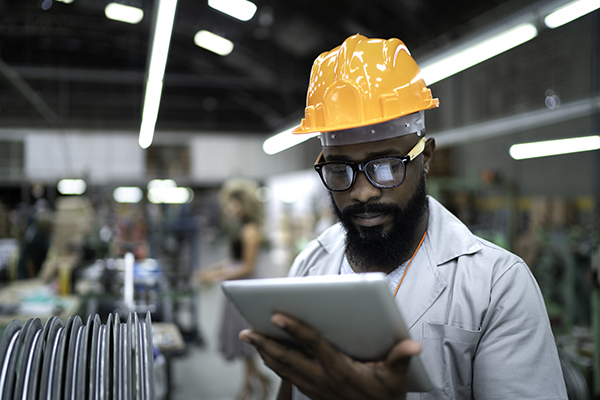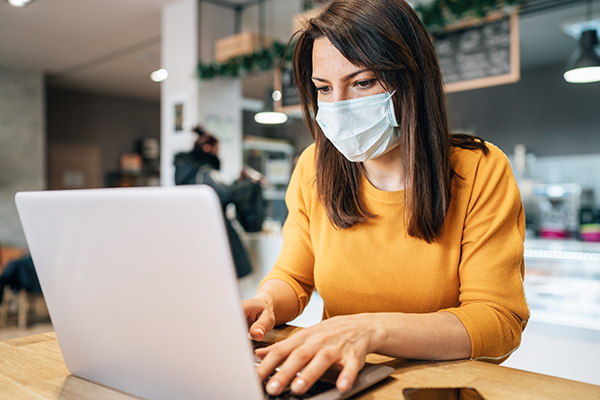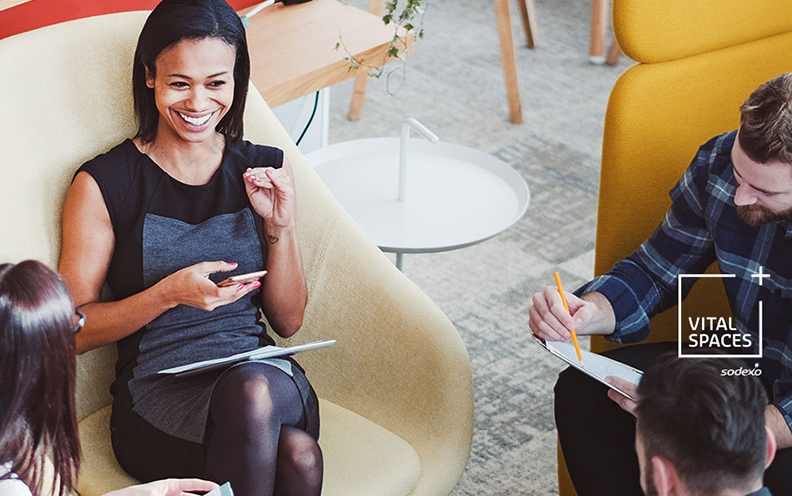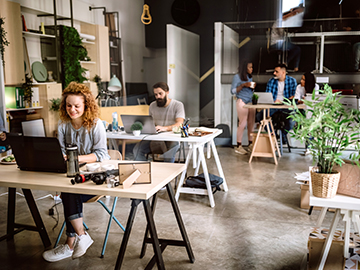The pandemic has transformed working practices, lengthened the working day and placed an enormous strain on the shoulders of the global workforce. In the US, 67% of workers believe the effects of Covid-19 have worsened employee burnout, while in the UK, a fifth of managers are considering quitting their jobs because of pandemic-related burnout. These figures illustrate the magnitude of the health and wellbeing challenge employers face.
As vaccination rates gather pace, employees are returning to factories, offices and retail stores – and many are bringing with them new perspectives on what they want and need from the workplace and their employers.
“We’re coming into a world where employers’ and employees’ views of what happens in the workplace are going to diverge more than they have in a long time," says Sylvia Metayer, Chief Growth Officer at Sodexo.
Employers will need to bridge that gap to ensure a successful transition back to the physical workplace, and to retain and attract the best talent. How do they do that?
Put mental health first
Instead of working from home, many employees now feel like they are living at work. They are struggling to switch off, and this is taking its toll on their health and wellbeing. Globally, stress levels among workers have heightened – increasing from 38% in 2019 to 43% in 2020 – and two out of three employers say that maintaining employee morale has been a challenge.
However, as the Covid-19 vaccination roll out picks up pace worldwide, fewer employees report having a lower mental health (15% in June 2021 versus 18% in October 20201), according to Sodexo’s Worklife Continuum Report, conducted in partnership with Harris Interactive.
Despite this, health and safety are still a key focus for HR teams – and 80% of employees say it is their employer’s responsibility to provide them with solutions to take care of their mental wellbeing2.
“With a dispersed workforce, we're on camera a lot of the time,” says Sharon Findlay, Global SVP Human Resources at Sodexo. “It is a drain. So how do we help people refuel? How do we help them feel comfortable? The onus is on us to ensure that mental health and wellbeing is really high on the agenda.”
To better support their employees in this environment, employers must destigmatize mental health and promote open dialogue about it. “The mental health of employees is extremely important,” says Ivan Ivanov, Head of Occupational and Workplace Health at the World Health Organization. “We have learned that it's okay to not be okay. Employers have to show employees that health – and that includes mental health – is part of their business and that they care.”
But employees also have to take some responsibility for this, according to Findlay. “Very often I see someone take a week’s holiday, but they put a note on their out of office saying that if it's urgent, you can contact them on their cell,” she says. “Don’t do that. If it's really urgent, colleagues will know how to get in touch with you.”
Encouragingly, more employees are stepping up and taking care of their own mental health, with 22% of individuals saying they have consulted a doctor face-to-face in June 2021 versus 16% in October 2020 and just 11% in June 20203.
Build a culture of trust
 Organizations need to be clear about what they expect from employees and their availability, suggests Tatjana Tasan, Chief People Officer at digital events and virtual conference provider MEETYOO. She says employees are now asking: “How can or should I behave? What is tolerated? Where do I need to adapt, or where does the organization need to adapt to me?” For employers and managers, being able to answer these questions and model expectations accordingly will be critical to maintaining an engaged workforce.
Organizations need to be clear about what they expect from employees and their availability, suggests Tatjana Tasan, Chief People Officer at digital events and virtual conference provider MEETYOO. She says employees are now asking: “How can or should I behave? What is tolerated? Where do I need to adapt, or where does the organization need to adapt to me?” For employers and managers, being able to answer these questions and model expectations accordingly will be critical to maintaining an engaged workforce.
Managers also need to shift their focus from hours worked to the output or impact of work.
For a long time, we have worked on the basis of trust,” says Tasan. “[And take the view that] it doesn't matter when you work, but what the result is. We found the more flexibility we gave, the more it paid back.
Our research with Harris Interactive confirms this. Employees now rank work flexibility (52%) above other employee benefits (51%) such as insurance, childcare and subsidized meals4 – a trend that Tasan witnessed throughout the pandemic. “People would take extra hours and work long shifts and the weekend if required due to customer demands, knowing that on Monday morning, they didn’t have to be at their desk at eight o'clock – they could come in as they saw fit or even swap days altogether” she says.
To create this culture of trust, employers have to lead by example, says Findlay. “That's where our focus is right now,” she says. “Leaders are a temperature gauge in terms of setting expectations. The employee value proposition is, to a real extent, what we sell to our clients. So being able to really walk that talk internally and champion a workplace that promotes improved mental health and wellbeing [is important].”
Balance personalization and privacy
 The borders between the professional and the personal life have collapsed during the pandemic, so it’s crucial to establish clear boundaries around employee data privacy and what is or isn’t acceptable.
The borders between the professional and the personal life have collapsed during the pandemic, so it’s crucial to establish clear boundaries around employee data privacy and what is or isn’t acceptable.
Firms need to put new precautions and policies in place to safely bring employees back to the workplace, so they will have to navigate new forms of health-related data collection, such as screening and contact-tracing. Increasingly, they will rely on digital tools that track employee whereabouts to manage supply and demand of space and services as they seek to mitigate the spread of Covid-19.
But firms will need to be transparent about the data-value exchange in order to persuade employees to part with more of their personal information, says Yannick Villar, CEO and Co-founder of Wx, a Sodexo consultancy specializing in workplace experience design.
“We're entering a world where employees will need to be willing to share personal data to get something more personalized or customized in return – but there is a natural fear there,” he says. “The biggest fear is that their employer says: ‘You entered the building at 10:30. What have you done since?’ Employees are considering, ‘What do I give and what do I get?’”
For instance, by sharing details of where and when an employee intends to work – as well as the kind of work they will be doing – via an app, employers could be better placed to provide an optimized work experience. This kind of data could help people to understand the utilization of physical workspaces and whether it makes sense to work on site, for example. It could also enable an employer to tailor the food and beverage offering to better support their employees’ health and wellbeing if they know which employees will be in the workplace on any given day and what their dietary needs are.
Experience reigns supreme
As your employees adapt to their new working environments, you must stay one step ahead of their demands. That means aligning your data policies with their expectations, putting health at the core of your business strategy and, above all, building a culture of trust.
Your people are your best asset. By prioritizing their experience in the new world of work, you will be best placed to thrive and maintain your competitive advantage.
This article is part of Sodexo’s ‘Experience Next’ thought leadership series on the work-life transformation.
What do employees expect as they return to the workplace?
1Sodexo/Harris Interactive, Worklife Continuum Report, Wave 5 Results
2ibid
3Sodexo/Harris Interactive, Worklife Continuum Report, Wave 5 Results
4ibid




